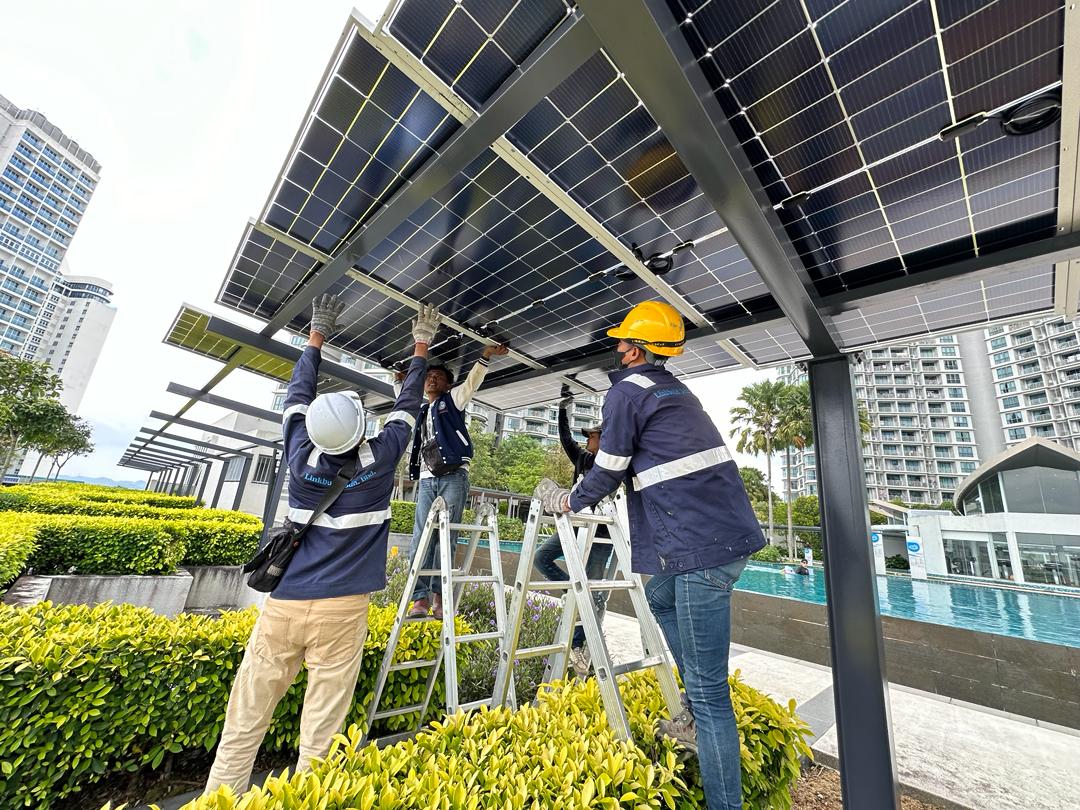What is BIPV and why is it becoming so popular?
Building-Integrated Photovoltaics, or BIPV for short, has rapidly gained popularity in Malaysia over the last few years. BIPV refers to the integration of solar panels into building structures to generate electricity, while serving as an architectural or construction element. A popular example would be walkways or awnings built for shelter purposes around common areas. Solar panels are typically installed on top of existing structures and often hidden from view, whereas BIPV systems are integrated into and form a key part of the overall design.
Advantages
The key advantage of BIPV is that it enables solar panels to serve a dual purpose – generating electricity while fulfilling a functional purpose, such as providing shelter or shade. For example, developers can consider incorporating solar panels onto a sheltered carpark. Not only will the developer be able to save money on roofing materials, but thanks to the green electricity generated by these solar panels, they will also be able to turn the carpark into a money-making and environment-saving asset.
Another big advantage of BIPV is in terms of aesthetics. Traditionally, solar panels were installed with their key purpose being energy efficiency and sustainability. In fact, solar panels were largely deemed as an eyesore that spoilt the overall aesthetic of the roofs they were mounted on. With BIPV and the integration of solar panels into a structural design, the futuristic and sleek look of the solar panels can now help to enhance the look of a building or structure instead.


* Photos taken from our recent installation at Teega Residence, Iskandar Puteri
For one of our latest BIPV projects at Teega Residences condominium, Iskandar Puteri, we designed a sheltered walkway at their viewing deck (on the sixth floor of the building) integrated with 70 bifacial solar panels. Bifacial solar panels are double-sided solar panels capable of producing solar power from both sides of the panel. Once this project was completed, it not only gave the condominium a modern and progressive look to people driving past, but also provided residents with an excellent view from their units above that enhanced the overall look of the premises. Furthermore, because these were bifacial panels, residents who decide to seek shelter under the walkway would also able to view the solar panels in full splendour from below, making for much more interesting viewing than a traditional roof.
With the price of solar panels continuing to fall, it is no wonder that more developers and architects are finding it much more viable to integrate them into building structures. Generous government incentives in Malaysia have also further reduced the unit cost of solar systems. As environmental awareness increases, allowing solar panels to have greater prominence in a building’s design also serves as the clearest demonstration of a developer’s or company’s commitment to their ESG goals. Of course, that should not be the only motivation, but any contribution to reducing carbon emissions should always be encouraged!


* Photos taken from our recent installation at Teega Residence, Iskandar Puteri
Conclusion
Overall, BIPV’s popularity has soared thanks to its ability to reconcile both environmental and financial considerations in a building’s design. For carparks and walkways in particular, the integration of solar panels allows business owners to monetise space that would ordinarily be wasted otherwise. This is especially true if their existing building roofs do not provide sufficient space for a large enough solar system to supply their energy needs.
If you would like to find out more or are interested in adding a BIPV system to your premises, feel free to contact us for more information!



